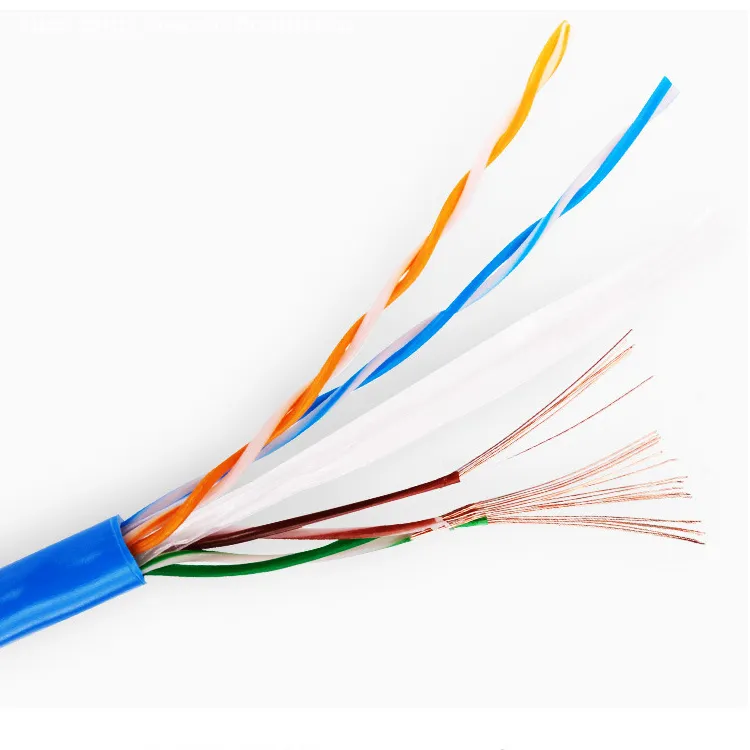The AWG size of your ethernet cable has a significant impact on its performance.
We’ll go through three of regular and the most popular AWG sizes such as 24AWG, 26AWG, and 28AWG.
Cat5e, Cat6, and Cat6A cables all use these cables. They aid in the selection of cable size and electrical performance.
What is AWG?
You might see an AWG specification printed on the cable jacket when purchasing Cat5e, Cat6, or Cat6a network cables. It stands for American Wire Gauge which determines the diameter of the individual conductors (wires).
It’s helpful to know what wire gauge implies to grasp the variations between comparable network connections with different AWG sizes.
The AWG sizes and the cable sizes are inversely proportional to each other. The thinner the cable, the higher the AWG size number. A 28AWG cable is smaller than a 24AWG cable.
The AWG size of a cable is determined by the thickness and diameter of its conductors.
Thinner wires will be found in larger gauge numbered cables. These cables are frequently stranded. This gives them additional flexibility and makes them ideal for short distances. You can also use them as patch cables.
Let’s move towards the difference between the variant sizes of the American Wire Gauge.
Difference between AWG Sizes
Depending upon the diameter and thickness of the wires. There are three main categories of AWG.
24AWG
Solid cables with smaller gauges such as 24AWG usually have thicker conductors inside.
These cables are ideal for long – distance runs since they include more copper. Smaller gauge numbered cables have riser jackets, outdoor, and plenum jackets.
These cables are made of fire-resistant materials, making them appropriate for any environment.
In comparison to 26AWG, and 28AWG cables, 24AWG cables have the largest length.
Solid core cables make up the majority of cable with this 24AWG size. They’re ideal for longer distances because of this.
The maximum distance Cat5e, Cat6, and Cat6A cable may run is 328 feet (100 meters). Within this 328-foot range, solid conductor cables perform better over longer distances.
You can find both stranded and solid 24AWG cables.
26AWG
Another popular cable size on the market is 26AWG cable.
Stranded cables frequently use 26AWG cables. They have slightly more copper than 28AWG cables and somewhat less copper than 24AWG cables.
This wire is ideal for short cable runs. You can use it to create patch cables in your home or business on a regular basis. 26AWG cables can also be insulated and stranded together, which is a popular application.
The conductors in the 26AWG cable are stranded, and each pair is foil wrapped. The shielding protects your cable from EMI interference.
28AWG
28AWG wires are highly used nowadays. This is due to the tiny wires used in this type of cable. The small wires make this cable much thinner than regular ethernet cables.
Stranded conductors are also present in this cable. When you compare the sizes of 24AWG and 28AWG, you can perceive the difference in size.
28AWG cable is also ideal for shorter runs because it has shorter wires in it.
These cables are among the most flexible on the market, which is beneficial for patch panels and networking enclosure installations.
Let’s wrap the information in the final thoughts.
Final Thoughts
Choosing the proper AWG size cable might help with overall performance. You need to consider the environment and location in which you are installing the AWG cables
Each of these cables has a specific purpose. 24AWG cable is the most adaptable of the three because it is manufactured with more copper. It is best for longer distances.
26AWG wires are ideal for constructing patch cables and shorter runs.
In comparison to 24AWG and 26AWG, 28AWG is the most flexible.
This cable will have more attenuation and insertion loss over longer distances.
Please contact us if you have any queries about these three AWG sizes. NEWLINKO here to assist you.

